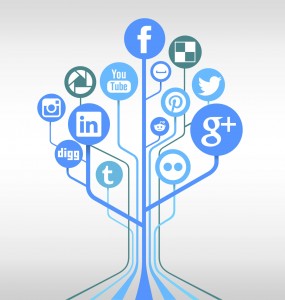 A Seattle Children’s researcher is chasing an elusive goal: finding a way to know when adolescents and young adults who contemplate suicide might actually try to harm themselves.
A Seattle Children’s researcher is chasing an elusive goal: finding a way to know when adolescents and young adults who contemplate suicide might actually try to harm themselves.
“Suicide risk rises and falls but it’s really hard to tell when it’s rising, even when you’re regularly seeing a patient,” said Dr. Molly Adrian, a psychologist at Seattle Children’s and investigator in Seattle Children’s Research Institute’s Center for Child Health, Behavior and Development.
Now, Adrian is pursuing an innovative solution – a computerized system that would search adolescents’ social media posts for signs of crisis and alert a medical specialist or family member when someone needs immediate help.
“Many adolescents are guarded in person but post their suicide crises online,” Adrian said. “If we can use that to know when those crises happen, we might be able to help kids before it’s too late.”
Predicting suicide based on key words and phrases
Adrian’s idea is based on the Durkheim Project, a nonprofit research effort that developed a new way to identify suicide risk among military veterans.
The Durkheim team used sophisticated technology to analyze psychiatrists’ notes about veteran patients and identify clusters of words, phrases and behaviors – such as “agitation” and “frightening” – that correlated to patients who committed suicide. Then the team developed a prediction model that tabulates a patient’s suicide risk. A study published in the journal PLOS ONE demonstrated that this text-mining approach could predict approximately 65% of suicide attempts among the population it studied. Prediction accuracy has improved since the original study to 70% and because it is based on machine learning algorithms is expected to improve as more data is collected and analyzed.
The Durkheim Project is testing a system that uploads content from the text messages and Facebook, Twitter and LinkedIn posts of veterans who volunteer to be part of its study. This content feeds into a database and is automatically searched for words and phrases that hint a veteran is at risk. Each study participant’s risk level is tracked in real-time and reflected via a numerical score and color-coded system.
When the risk score gets to a dangerous level, the system sends an email or text message to a mental health provider or family member. Someday, it might also send calming tips to the person at risk, such as advice to “hold several pieces of ice in your hand until they completely melt.”
Working to prevent teen suicide
The Durkheim Project is partnering with Adrian and other experts to adapt its work to other populations. Adrian recently applied for a National Institutes of Health K Award – a grant that helps young researchers establish their careers – to conduct a study that would start with “retraining” the Durkheim Project’s technology to tailor it to adolescents. One key is to identify whether the words or phrases that reflect suicide risk in this population are different from the veteran population.
From there, Adrian’s team would launch a small study to determine whether adolescents and young adults would actually opt-in to the system, and whether they find how usable the system is. Specifically, youth will be asked how easy the system was to navigate and how helpful it was in conjunction with therapy. Clinicians will be asked how easy the technology was to use and how it fits with their clinical work flow. The system would also use providers’ notes to help tabulate the automated risk scores.
“Ideally, the risk score would help us know when suicide risk is going up so we can address it in therapy before it gets too high,” Adrian says.
Finally, Adrian would lead a small, randomized controlled trial to evaluate how well the system identifies participants’ risk and whether it can truly help improve care and prevent suicide.
The potential to help teens everywhere
The system could be expanded so teens anywhere could opt-in, along with their friends and family members. This could provide an early-warning system that helps everyone from medical providers to family members support adolescents when they need it most.
“We have a long way to go to see if it works, but it has the potential to make a huge difference,” Adrian says.
Resources
- Seattle Children’s Psychiatry and Behavioral Medicine
- Depression Symptoms and Diagnosis
- National Suicide Prevention Lifeline

